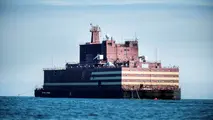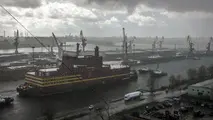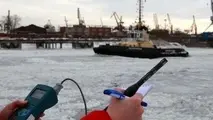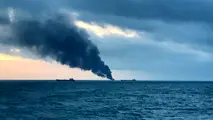Russia Launches Nuclear-Powered Icebreaker for Arctic Operations
Russia’s Baltic Shipyard launched the nation’s third nuclear-powered icebreaker Ural in a ceremony in St. Petersburg on May 25, 2019.

Russia’s Baltic Shipyard launched the nation’s third nuclear-powered icebreaker Ural in a ceremony in St. Petersburg on May 25, 2019.
With the launch of Ural, Russia’s state-owned nuclear energy company Rosatom is taking another step towards ensuring all-year round navigability of the Northern Sea Route (NSR).
Together with its two predecessors Arktik and Sibir, Ural will help Russia exploit the Arctic’s commercial potential, which is being made possible by the warmer climate cycles.
The 173-meter-long project 22220 ships are the largest icebreakers in the world, capable of breaking through ice as thick as 3 meters, according to the company.
Ural is scheduled to be delivered to Rosatom in 2022, after starting construction in July 2016. The company added that a contract for the construction of additional two icebreakers was expected to be signed by August this year.
“Our goal for 2024 is for more than 80 million metric tons of shipments to pass through the NSR. We also plan to add two more project 22220 ships to our nuclear icebreaker fleet by 2027,” Alexey Likhachev, Director General of Rosatom, said.
The ships are powered by two RITM-200 nuclear reactors on board, capable of generating up to 350MW of power combined.
Another feature of the project 22220 vessels is the dual-draught design. As explained by Rosatom, the ballast tanks inside their hulls can be adjusted easily to alter the ship’s draught depending on whether the vessel needs to navigate the Arctic waters or shallow river estuaries.
The Russian government has given Rosatom the lead in the development of the NSR infrastructure. The project’s total amount of funding for six years is RUB 734.9 billion (approx. USD 11.4 billion). Up to a third of that, RUB 274 billion, will be provided from the government budget. The remaining two-thirds, over 460 billion rubles, will be contributed by investors, including Rosatom, Rosneft and Novatek and others, who are interested in transporting cargo along the Arctic route.



